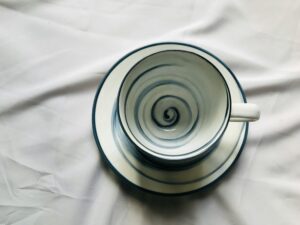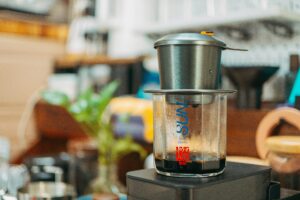Coffee has long been more than just a beverage—it’s a global ritual, a symbol of connection, and an ever-evolving culture. Among the many waves of innovation and refinement in the coffee industry, one movement stands out for its emphasis on purity, traceability, and flavor complexity: single-origin coffee. Whether you’re a casual sipper or a seasoned coffee aficionado, exploring the world of single-origin coffee offers a rich, flavorful journey through geography, culture, and craft.
Table of Contents
What is Single-Origin Coffee?
Single-origin coffee refers to beans sourced from one specific location. That location can range in scale from a single farm to an entire region within a country. Unlike blends, which mix beans from various origins to create a balanced flavor profile, single-origin coffees highlight the unique characteristics of their place of origin.
The terroir—or the environmental factors like climate, soil, altitude, and farming techniques—plays a significant role in shaping the taste of single-origin coffee. This means that beans from Ethiopia’s Yirgacheffe region may offer bright, floral notes, while those from Colombia’s Huila region may boast a rich, nutty sweetness. Each cup tells a story of its land, the farmer who grew it, and the conditions under which it was harvested.
The Rise in Popularity of Single-Origin Coffee
Over the past decade, there has been a surge in demand for specialty coffee, and single-origin beans have become a centerpiece of this movement. This trend is driven by an increasing consumer interest in ethical sourcing, quality assurance, and transparent supply chains. As people become more curious about where their food and drink come from, they also seek deeper connections with their coffee.
Artisan coffee roasters, third-wave cafés, and home brewers alike celebrate single-origin coffee for its clarity of flavor and educational value. It enables drinkers to compare and contrast beans from different regions and appreciate the nuanced differences between them, similar to wine tasting.
Flavor Profiles of Popular Single-Origin Regions
Exploring single-origin coffee involves experiencing the distinct profiles offered by various growing regions across the globe. Here are a few examples of what different regions might offer:
Ethiopia
Often considered the birthplace of coffee, Ethiopian beans are known for their vibrant floral aromas and fruity, wine-like flavors. Many come from high altitudes and are processed using the traditional “natural” drying method, which imparts a distinctive complexity.
Colombia
Colombian coffee is prized for its balanced flavor profile, featuring notes of caramel, nuts, and chocolate, with a medium acidity and a clean finish. It’s one of the most consistent producers of high-quality beans, thanks to its ideal climate and advanced agricultural practices.
Kenya
Kenyan coffee is bold and bright, often characterized by a juicy, full-bodied taste with notes of blackcurrant, citrus, and tomato-like acidity. The beans are typically washed, enhancing their crisp and refined nature.
Brazil
As the world’s largest coffee producer, Brazil’s single-origin offerings tend to have a low acidity, full body, and flavors of chocolate, nuts, and dried fruits. These coffees are often accessible and smooth, making them great for beginners.
Sumatra
Indonesian coffees from regions like Sumatra are known for their earthy, spicy, and full-bodied flavors. They typically undergo a unique processing method called “wet hulling,” which contributes to their rich and sometimes herbal taste.
Stumptown Coffee Roasters
Why Choose Single-Origin Coffee?
One of the most compelling reasons to opt for single-origin coffee is the transparency it provides. When you purchase a bag labeled with the specific farm or region it came from, you know exactly where your coffee is sourced. This traceability often translates to higher quality, as producers and roasters take greater care in handling and roasting these premium beans.
Additionally, single-origin coffee allows for a deeper appreciation of the complexities and subtleties in flavor that can be lost in blends. Each batch is like a snapshot of its origin’s microclimate, season, and production method. For those who love discovering new flavors and developing their palate, single-origin coffee offers an ever-expanding universe of taste experiences.
It also supports sustainable practices and fair trade. Many single-origin coffees come from smallholder farms and cooperatives that benefit from direct trade relationships. This not only ensures better compensation for farmers but also incentivizes quality and environmental stewardship.
Brewing Tips for Single-Origin Coffee
Because single-origin coffee showcases unique flavor notes, it’s important to brew it in a way that honors its origin. Here are some brewing tips to get the most out of your beans:
First, always start with freshly ground coffee. Grinding your beans right before brewing preserves volatile aromas and flavors. Use a burr grinder for consistent particle size, which ensures even extraction.
Second, pay attention to water temperature and brew time. For most manual brewing methods like pour-over or Chemex, aim for water just off the boil—around 195°F to 205°F. Adjust your brew time to balance extraction; too short, and you’ll get sour notes; too long, and it may become bitter.
Third, experiment with different ratios and methods. Some single-origins shine in espresso, while others do better with immersion methods like the French press. The fun lies in discovering which brew style best brings out the bean’s potential.
The Impact of Seasonality
Unlike mass-produced blends that are consistent year-round, single-origin coffees are often seasonal. Coffee cherries are harvested at specific times of the year, and the resulting beans are at their freshest within a few months of processing. This seasonality means that certain beans might only be available for a limited time, making the experience of enjoying them more special and ephemeral.
Coffee enthusiasts often follow the harvest calendar, eagerly anticipating the arrival of fresh crops from their favorite origins. This seasonal aspect fosters a deeper appreciation for the agricultural side of coffee production and encourages a closer relationship between consumer and producer.
Single-Origin vs. Blended Coffee: Which is Better?
The debate between single-origin and blended coffee often comes down to personal preference. Blends are created to provide a consistent taste profile, often balancing acidity, body, and sweetness to appeal to a broader audience. They’re ideal for espresso-based drinks where a harmonious flavor is desired.
Single-origin coffee, on the other hand, is about exploration and authenticity. It doesn’t try to mask or even out flavor quirks—it celebrates them. It’s the ideal choice for pour-overs and slow brewing methods where clarity and nuance are appreciated.
Both have their merits, and many coffee drinkers enjoy having both on hand: a blend for their morning espresso and a single-origin for their weekend pour-over ritual.
Where to Find Quality Single-Origin Coffee
Finding good single-origin coffee starts with sourcing from reputable roasters and specialty coffee shops. Many artisan roasters provide detailed information about the origin, farm, processing method, and tasting notes of their beans. Look for freshness dates and roast levels that match your preferred brewing style.
Online coffee subscriptions have also made it easier than ever to explore single-origin coffees from around the world. Some services even allow you to customize your flavor preferences and receive beans curated just for you.
FAQs About Single-Origin Coffee
1. Is single-origin coffee more expensive?
Generally, yes. Single-origin coffee tends to be more expensive because it involves more meticulous harvesting, processing, and handling. Additionally, the traceability and ethical sourcing contribute to the cost. However, many find the superior quality and flavor worth the investment.
2. Can single-origin coffee be used for espresso?
Absolutely. While blends are common for espresso due to their balanced profiles, single-origin beans can offer unique and exciting shots, especially when roasted specifically for espresso use. Fruity or acidic single-origins can provide a bright, complex crema.
3. How should I store single-origin coffee?
Store your coffee in an airtight container, away from light, moisture, and heat. Avoid keeping it in the fridge or freezer, as this can introduce moisture. Use your beans within two to four weeks of opening for optimal freshness.
4. Are all single-origin coffees organic or fair trade?
Not necessarily. While many are ethically sourced and organic, it’s not a guarantee. Always look for certifications or direct trade labels if these values are important to you.
5. What’s the best method to brew single-origin coffee?
There’s no single best method—it depends on the bean’s origin and roast. However, pour-over methods like the Hario V60 or Chemex are popular choices because they highlight delicate flavors and aromas.
Final Thoughts
Exploring the world of single-origin coffee is like embarking on a global tasting tour without ever leaving your kitchen. It opens doors to new flavors, stories, and a deeper connection with the people and places behind your daily cup. Whether you’re savoring the floral notes of an Ethiopian heirloom or the rich depth of a Sumatran bean, each sip is a celebration of craftsmanship and culture.
So the next time you’re choosing your coffee, consider picking up a bag of single-origin beans. It might just change the way you see—and taste—coffee forever.







